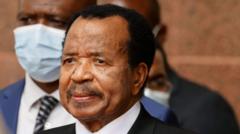The upcoming national elections in Australia present a pivotal decision for voters, with candidates offering vastly different energy policies that could shape the country's response to climate change.
Australia's Critical Election: A Defining Moment for Climate Policy

Australia's Critical Election: A Defining Moment for Climate Policy
Voters face contrasting energy and climate platforms as national elections approach in a major coal-exporting nation.
With national elections on the horizon, Australian citizens find themselves at a crossroads regarding energy policy and climate change. Among developed nations, Australia ranks alongside the United States and Canada for its high per capita greenhouse gas emissions, largely due to its significant fossil fuel exports. Polls indicate that while climate issues might not dominate voter concerns, the diverging plans from the leading parties, the Labor Party and the Liberal-National Coalition, are crucial.
At the center of this debate is Australia’s aging coal power infrastructure, a significant contributor to greenhouse emissions. According to Andrew Macintosh, an environmental law expert at the Australian National University, there’s an urgent need for change irrespective of climate considerations. The Labor Party advocates for renewable energy expansion, while the conservative coalition is exploring nuclear power as a solution.
While both parties aim for emissions reductions, there are challenges with the nuclear plan, which has left experts puzzled. Nuclear facilities can take over a decade to construct, prolonging reliance on coal, which perpetuates high emissions. As Macintosh points out, maintaining existing coal plants could be both financially burdensome and environmentally detrimental, raising questions about the practicalities of implementing such a long-term strategy amidst the pressing need for immediate change.
As voters prepare to cast their ballots, the unfolding response to these energy policies may dictate Australia’s climate trajectory for years to come.




















